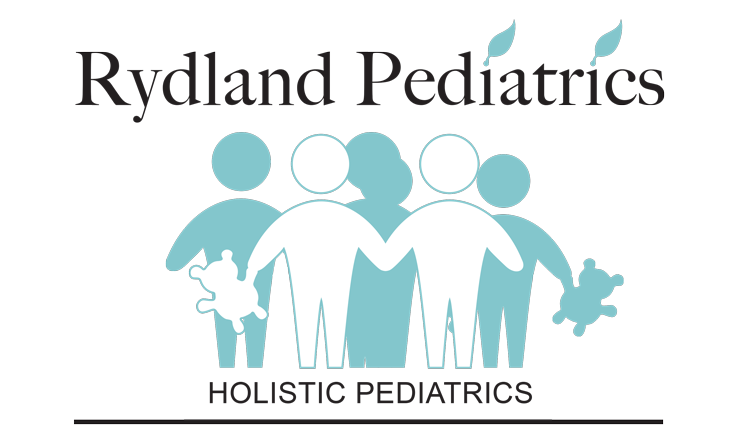Dr Rydland’s Patient Information on Vaccines
- July 12, 2014
- Health and Wellness
Contraversies in vaccination
ERIC N. RYDLAND, M.D.
1921 COMMONWEALTH DR.
CHARLOTTESVILLE, VA 22903
drrydland@kidswellness.com
434-984-5437
Copyright 2002-2011
VACCINATION OR IMMUNIZATION?
Vaccination is the physical act of administering a vaccine or toxoid
Immunization is the process of inducing artificial immunity by administering an immunobiologic
“Although persons often use vaccination and immunization interchangeably, the term are not synonymous; the administration of an immunobiologic cannot be automatically equated with the development of adequate immunity”
-CDC 1994
WHAT ARE VACCINES
Purified preparations obtained from viruses or bacteria grown in laboratories
Modified to prevent the disease
Dead or live organisms
Usually injected, rarely oral or nasal
WHY ARE THEY GIVEN?
Diseases exist and are potentially serious
Public vs. individual rights (to protect the public from epidemics)
Concept of herd immunity (prevent epidemics if enough vaccinated)
Protect the individual
ASSUMPTIONS
Vaccines are safe
Vaccines are effective and long lasting
Vaccine benefits include decline in infectious diseases
Vaccines are the only way to prevent epidemics of dangerous diseases
YOUR DECISION
What are the risks of the disease?
How likely is my child to get the disease: general health (i.e. constitution), risk factors, etc.
What are the risks, efficacy of the vaccine?
Whether to give or not
When, what vaccines to give
Legal considerations
DISEASES
Diphtheria
Tetanus
Pertussis (whooping cough)
Polio
Hemophilus Influenza type B
Hepatitis A and B
Pneumococcus (Prevnar or PCV 7)
DISEASES
Measles (L) [L=live virus vaccine]
Mumps (L)
Rubella (German Measles) (L)
Varicella (Chicken Pox) (L)
Influenza (L)
Rabies
Meningococcus
DISEASES
Rotavirus (L)
Human papilloma virus
Typhoid
Smallpox
Anthrax
Tuberculosis (BCG)
Others for special circumstances, e.g. yellow fever, Japanese encephalitis, Lyme, etc.
Hundreds of others in development
DIPHTHERIA
Now a rare disease, <10/yr. In U.S.
Corynebacterium diphtheriae bacteria
80% of cases <15 yr. Old
Mostly in poor and crowded conditions
Respiratory spread
1-6 day incubation period
DIPHTHERIA
Toxin produces tissue necrosis in nose, lungs, trachea, throat membranes
Toxin in bloodstream: may affect heart, nerves and kidneys
Treatment (conventional): antitoxin, antibiotics, bed rest, fluids, tracheotomy (rare)
Mortality 10%
TETANUS
Rare disease, <50/yr
Clostridium tetani bacteria (toxin)
Bacteria found in soil, house dust, fresh and salt water, animal feces
Most common age 19-35 yr old, neonatal tetanus still occurs in areas
In US 0-2 cases in <5 years old annually
Colonization at umbilicus, traumatic injury
Wound care extremely important
TETANUS
Incubation usually 3-14 days
Toxin inhibits nerves that relax muscles, may move along the nerves
Generalized disease most common, also local and cephalic (brain)
Seizures, muscle spasm may cause lack of oxygen to tissues
TETANUS
Treatment: antibiotics, muscle relaxants, neuromuscular blocking agents, supportive care in hospital
Mortality of 30-65%, highest rates in younger and older
PERTUSSIS
Still a common illness, 1000-8000/yr. in U.S.
Bordatella pertussis bacteria
97-100% contagious, affects all ages
Respiratory spread
Respiratory tissues swollen, thick mucous, obstruction of airways
Liver and brain may be affected
PERTUSSIS
Incubation period 6-20 days
Begins with cold-like symptoms 1-2 wk.
Severe symptom period follows, 2-4+ wk.
1-2 wk. of gradual recovery
Treatment: antibiotics, steroids, fluids, supportive
Less than 1% mortality, higher in young
POLIO
Becoming increasingly rare
Only cause in U.S. since 1979 is live vaccine
Live vaccine last sold (U.S.) 1/2000
Caused by Poliovirus Fecal-oral spread (items contaminated by virus present in feces)
Incubation 3-7 days
POLIO
Most cases have minor or no symptoms
Intestinal, respiratory and muscle symptoms
Treatment mostly supportive
Mortality unknown, was 5-7 % prevaccine
Unexpected improvement may occur
HIB (HEMOPHILUS INFLUENZA SEROTYPE B)
Almost exclusively in children <7 yr.
Bacterial illness
Rate has declined since vaccine
Was major cause of meningitis 1 mo.-3 yr., other infections incl. epiglottitis
peak in 6-9 mo. 80% <18 mo.
HIB (HEMOPHILUS INFLUENZA SEROTYPE B)
More common in day care
Respiratory spread
Meningitis mortality 2-18%, permanent nerve damage 20%, additional 5-10% hearing deficits
Treatment: antibiotics, steroids, fluids
HEPATITIS A
Common virus
Mostly in epidemics or “endemic” (usually “developing”) countries
Affects the liver
May easily spread in day care-hygiene
Highly contagious, fecal-oral spread
Incubation period 4-6 wk.
HEPATITIS A
Doesn’t affect baby of infected mother
Treatment supportive, fluids
Illness may last for months, usually complete recovery
Rarely a serious illness
Vaccine recently recommended 12-23 months old
HEPATITIS B
Uncommon in young children
Risk factors sexual contact, birthing, shared needles, blood, institutional living, (possibly) breast milk
Viral infection
Exchange of blood and body fluids, detected in saliva
HEPATITIS B
Routine prenatal blood test
Incubation period 2-5 mo.
May cause progressive liver failure
Associated with an increase of liver cancer
PNEUMOCOCCUS (PCV 7, PCV 13)
Affects all ages
Bacterial infection
More than 80 strains of this bacterium
Seven most common strains of childhood illness in the PCV 7; thirteen in PCV 13
Meningitis in children 6 mo.-4 yr.
Also other infections, e.g. pneumonia, ear infections, etc.
PNEUMOCOCCUS (PCV 7, PCV 13)
More serious in sickle cell, asplenia, immunodeficient, nephrosis
Frequently follows upper resp. infection (cold)
Treatment, antibiotics, steroids, fluids, supportive
5-10% mortality, increased risk of neurological events
MEASLES
Rare disease now
Viral infection, respiratory spread
Occurs in epidemics about every 2-4 yr.
Highly contagious, >90% if susceptible
Incubation period 10-12 days
Contagious for up to 3 days before illness
MEASLES
Have occurred in highly vaccinated populations, especially adults
Treatment supportive
Complications of encephalitis and subacute sclerosing panencephalitis potentially cause permanent nerve damage
MUMPS
Viral illness spread through direct, respiratory, fomites (saliva)
Incubation period 14-24 days
30-40% subclinical
Usually mild except perinatal (near birth)
Affects salivary glands, pancreas, brain, testes, ovaries
MUMPS
Meningoencephalitis 2.5/1,000, leading to death in 2% of those affected
Orchitis in 14-35%, impairment in fertility 13% male, not in female
Deafness in 1/15,000
Treatment is supportive
RUBELLA
Usually mild self-limited illness
Hazard is to fetus only, except in very rare cases
Viral illness, respiratory or transplacental spread
Highly contagious, up to 100%
Epidemics every 6-9 years
RUBELLA
Incubation period 14-21 days
Risk of congenital defects prenatally: ~100% 1st mo., 40% 2nd mo., 10% 3rd mo., 4% thereafter—neurologic, hearing, immune, rashes, diabetes, (rarely) death
Childhood complications rare, include arthritis, neuritis, no specific treatment
VARICELLA
Very common illness prior to vaccine
Since vaccine ~1996 declining frequency
Rarely serious in children after neonatal period (perinatal varicella 20% mortality)
Becomes more serious in teens, adults
Incubation period 11-21 days
Subclinical (not diagnosable) in ~15%
VARICELLA
Viral illness; direct contact or droplet spread; highly contagious
Complications mostly skin infections, rarely hemorrhage, Reyes, congenital malformations (rare), pneumonia (mostly adult), encephalitis and other neurologic (rare); immunosuppressed more susceptible to complications
NO ASPIRIN in children with varicella (may cause Reyes Syndrome)
INFLUENZA
Viral infection, attack rates up to 50%; respiratory spread
Newest recommended vaccine
Epidemics occur every 2-3 years (minor), 4-7 years (major), due to changes in virus
Incubation period 2-3 days
INFLUENZA
Vaccine previously only for children with severe lung, heart or immune disease
Most common complications of disease are bacterial infections: respiratory, ear, also heart and Reyes syndrome (NO aspirin)
Prognosis generally good except for high risk children, (possibly) healthy infants and toddlers
My natural recommendations are listed at www.kidswellness.com
VACCINE ABBREVIATIONS
DTaP: diphtheria, tetanus and (acellular) pertussis
HIB: hemophilus influenza type B
HBV: hepatitis B
PCV 7, PCV 13: pneumoccus
MMR: measles, mumps, rubella
VZV: varicella (chicken pox)
HAV: hepatitis A
FLU: influenza
SCHOOL REQUIREMENTS
DTaP 4-5 doses
Polio 3-4 doses
HIB 1-4 doses (under 5 years old)
HBV 3 doses
MMR 2 doses
VZV 2 doses
PCV 7 or 13 0-4 doses
Boosters at 6th or 7th grade
Some states have additional requirements
Vaccine assumptions
1. VACCINES ARE SAFE
SAFETY STUDY
One vaccine is compared to a standard vaccine, not an inert substance (placebo)
When placebo controlled not true placebos
Studies are small in size and include ONLY healthy children
Serious side effects often negated by the authors (e.g. although a certain percentage of serious side effects occurred, none were judged by the investigators to be caused by the vaccine)—not listed in abstract or conclusions
VACCINE SAFETY CONCLUSIONS
When one starts with flawed information you cannot have valid conclusions. Therefore, since there aren’t valid study conclusions we cannot infer that vaccines are safe
Numerous studies document children are generally healthier if unvaccinated.
Less frequent allergies, 5-14 times less asthma
2.5 to 9 times less skin conditions
8 times less hyperactive (ADHD) up to 100 times less autism
Lower risk of death by almost half
VACCINE ASSUMPTIONS
2. VACCINES ARE EFFECTIVE
VACCINE THEORY
Prevent serious illness in recipient
Possibly prevent illness in unvaccinated
Several small doses cause immune response
Conventional medicine touts success
Alternative practitioners-success from other factors
EFFICACY VS. EFFECTIVENESS
Efficacy is defined as research effect: laboratory evidence of an immune response by elevated antibody levels (only one of many factors that determine immune response)
Effectiveness is the actual ability of the immunobiologic in clinical settings to prevent disease
Studies measure antibody levels and not ability to prevent disease
EFFICACY
“The findings of efficacy studies have not demonstrated a direct correlation between antibody response and protection against pertussis diesase.”
–MMWR 1997
Especially true in viral diseases where the cellular response, not antibody is the immune system’s tool to eliminate the organism
MEASLES OUTBREAKS
1984, Waltham MA 98+% vaccinated
1986 Corpus Cristi TX 99+% vaccinated
1989 Illinois high school 99.7% vaccinated
VACCINE COMPONENTS
Live vs. “attenuated”, dead organism
Culture media (e.g. beef heart, monkey kidney, eggs, bovine serum, mouse serum, human albumen, aborted fetal lines [Varicella, Rubella], etc.) in which organism grown
Thimerosal (mercury-in some dead vaccines)
Aluminum (0.11-0.625 mg./dose [dead])
Formaldehyde [dead]
“Piggyback” or contaminant viruses [live]
VACCINE COMPONENTS
Multiple antigens/proteins
Buffers
Polysorbate 80 (in animal studies linked to damage of the female reproductive organs and infertility)
Gelatin
Glycine
Lysine
Sucrose
VACCINE COMPONENTS
2-phenoxyethanol (preservative)
Sodium, potassium chloride
Sorbitol
MSG
Others, incl. preservatives, buffers, etc.
VACCINE REACTIONS
Most immediate (first 2-3 days) vaccine reactions are mild
Severe reactions can and do occur to each vaccine
Vaccines thought (by “alternative/integrative”) to shift immune system toward autoimmunity (immune system attacking normal body tissues)
Long-term, slowly progressive and permanent reactions unknown
Some are vehemently debated
VACCINE REACTIONS DTaP
Frequency ~25%, most minor, include:
Local reactions (e.g. swelling, redness, pain), sterile abcess, nodule, headache, fever, chills, weakness, fatigue, cellulitis, dizziness, drowsiness, irritability, aches and pains, flushing, tachycardia, fainting, nausea, vomiting, diarrhea, swollen glands, phlebitis, muscle and joint pains, itching, hives, sweating, EEG changes, myelitis,
VACCINE REACTIONS DTaP
fever, decreased appetite, myelopathy, “acute midbrain syndrome”, paralysis of other motor and sensory nerves, persistent crying or fretfulness, cochlear (balance system) lesions, convulsions, encephalopathy, Guillian-Barreì syndrome (GBS), neuropathies, erythema multiforme, anaphylaxis, shock, death (+14/29,000)
HIB VACCINE REACTIONS
Approx 20%, listed ones include
Sleepiness, persistent crying, irritability, local reactions, vomiting and diarrhea, appetite loss, rash, fever, unusual crying, drowsiness
Hives
Erythema multiforme
Convulsions
Guillian-Barreì syndrome Renal (kidney) failure
REACTIONS-HBV
Overall over 30-40% reactions include:
Local reactions, fever, irritability, dizziness, somnolence (excessive sleep), headache, itching, bruising, sweating, cold-flu symptoms, weakness, flushing, nausea, decreased appetite, vomiting, diarrhea, constipation, hypotension (low blood pressure), swollen lymph glands, sore/stiff muscles/joints, hives, arthritis, asthma, tachycardia, rash
REACTIONS-HBV
anaphylaxis, erythema multiforme, Stevens-Johnson syndrome, conjunctivitis, ear infections, GBS, MS (Multiple Sclerosis-?), seizures, diabetes (?), eczema, hair loss, tinnitus (ringing in the ears), migraine, motor and sensory nerve disorders, Bell’s palsy, SIDS, colitis, autism (?)
REATIONS-POLIO
40+% fever, irritability, tiredness, also anorexia, vomiting, local reactions, fever, fussiness, sleepiness, crying, GBS, death (uncertain)
MMR REACTIONS
Overall approximate frequency 30-40%
Fever, skin rash, cold symptoms, headache, dizziness, irritability, nausea, vomiting, diarrhea, bruising, low platelets, high white blood cells, swollen lymph glands, fainting, vasculitis, anaphylaxis, bronchial spasm, encephalitis, encephalopathy, SSPE (“subacute sclerosing panencephalitis”), GBS, convulsions, ataxia, eye nerve palsies, pneumonia, deafness Stevens-Johnson syndrome, hives, local reactions, arthritis,
MMR REACTIONS
ear infections, sore throat, cold symptoms, ear infections, fainting, conjunctivitis, atypical measles, arthritis, various eye conditions (papillitis, optic neuritis, retrobulbar neuritis) neurologic conditions (polyneuritis, polyneuropathy, paresthesia), autism (debated, probable), death (possible)
VARIVAX REACTIONS
canker sores, encephalitis, anaphylaxis, low platelets, non-febrile seizures, GBS, transverse myelitis, Bell’s palsy, ataxia, sore throat, Stevens-Johnson syndrome, erythema multiforme, Henoch-Schoenlein purpura, impetigo, cellulitis, herpes zoster
HEPATITIS A REACTIONS
20+%, including local reactions, fever, abdominal pain, sore throat, headache, vomiting, diarrhea, cold symptoms, cough, fatigue, myalgia, back pain, nausea, “menstruation disorder”, asthma, wheezing, swelling, rash, generalized erythema (redness of skin), hives, eye irritation/itching, dermatitis
INFLUENZA REACTIONS
Local reactions, fever, malaise, myalgia, headache, itching, dizziness, nausea, vomiting, diarrhea, arthralgias, myalgia, swollen lymph glands hives, asthma, anaphylaxis, Guillian-Barreì syndrome (1/50,00-100,000 doses), encephalopathy, optic nerve disorders, facial paralysis, brachial nerve disorders, vasculitis, labyrinthitis, encephalitis, meningitis
OTHER LIKELY REACTIONS
Immune depression
Autoimmune reactions (MS, diabetes, lupus, CFIDS)
Other viral infections
Reactions to foreign tissue
BUT DOCTOR, DIDN’T VACCINES WIPE OUT SMALLPOX AND POLIO?
SMALLPOX
First smallpox vaccine in the US 1801
Mass vaccination wasn’t working; in India, with a 88% vaccine rate even in the 1960’s outbreaks were still occuring
Mass vaccination in “third world” was discontinued by the WHO in 1972
Replaced by active surveillance and quarantine
Outbreaks stopped 4 yrs later and disease disappeared in 7 years
POLIO
Disease was already declining in the developed world when vaccine introduced
Rate of decrease didn’t change
Definition of disease has been changed after vaccine introduced
Only polio in US since 1979 is polio vaccine
MEASLES
1920: 469,924 cases, death rate 1.6%
1955 death rate 3 per 10,000,000
Vaccine introduced 1963
PERTUSSIS
Jan 1997-Dec 2000: four year period 79 deaths from disease
VAERS information showed 57 deaths in 1998 alone from the vaccine
Underreporting of vaccine complications could mean there were up to 570 deaths from the vaccine in 1998.
RYDLAND FIVE FINGER RULES FOR VACCINES
IF YOU GIVE VACCIES, BEFORE GIVING THEM THE FOLLOWING IS IMPERATIVE:
SHOULD BE HEALTHY
ONE VACCINE AT A TIME
PREPARE IN ADVANCE
ONLY MOST IMPORTANT
LEGAL CONSIDERATIONS
NOSODES
Preparations from diseased tissue, virus or bacteria
Sterilized
Potentized, usually 30C or 200C, but other practitioners use different potencies.
Results and studies to be discussed
CONCLUSIONS
Vaccines haven’t been proven to be safe
Whereas vaccines have been shown to produce antibody levels, they haven’t been proven to be effective clinically against disease
Vaccines do not improve the quality of life
Side effects and long term consequences of vaccines and death have occurred and are potential effects of the vaccines
Vaccine contamination hasn’t been adequately studied and may be a very serious problem
FINAL THOUGHTS
Vaccines are likely the most controversial aspect of pediatric medicine today. The diseases are often serious, but all vaccines have potentially serious side effects. I personally believe that the vaccines are effective in preventing some illness, but are not without considerable risk. I strongly recommend my patients educate, establish a healthy lifestyle, choose wisely, pray about their decision and then prepare their children. Remember that you do have choices and should exercise your rights both in action and speech.
Dr. Eric N. Rydland, graduated from the University of Miami undergraduate and School of Medicine in 1974 and 1978 respectively and completed his pediatric training at the University of Miami Affiliated Hospitals in 1981. He is pediatric board certified by the American Board of Pediatrics. During his nearly 30 years of clinical experience Dr. Rydland has researched and studied the holistic field and alternative treatments. Integrating these holistic treatments with traditional medical care based upon the wisdom only God can give, has given thousands of patients optimal health benefits. This has been achieved through work with many published authors in the alternative field, his experience, and devine wisdom. In addition to the kidsWellness products our site features other products he uses in his clinical practice. Dr. Rydland is a frequent guest on radio and television, speaker at medical seminars and public conferences, and a published author. He is the Founder and Developer of kidsWellnessTM Incorporated (October 1999)
Upcoming Events
- No Events
WHAT OUR PATIENTS ARE SAYING
Testimonial 1
How I wish I weren't writing this and that by some feat of providence we could have brought you with us to Texas – I don’t know if I’ll ever have the confidence and esteem for another pediatrician that I felt when consulting with you about Frank’s health. Thank you so much for being there when we needed you! Again thank you for everything!
Testimonial 2
Sheri, Hollywood
Sheri, Hollywood
Testimonial 3
Elizabeth, Miami Springs
Elizabeth, Miami Springs



